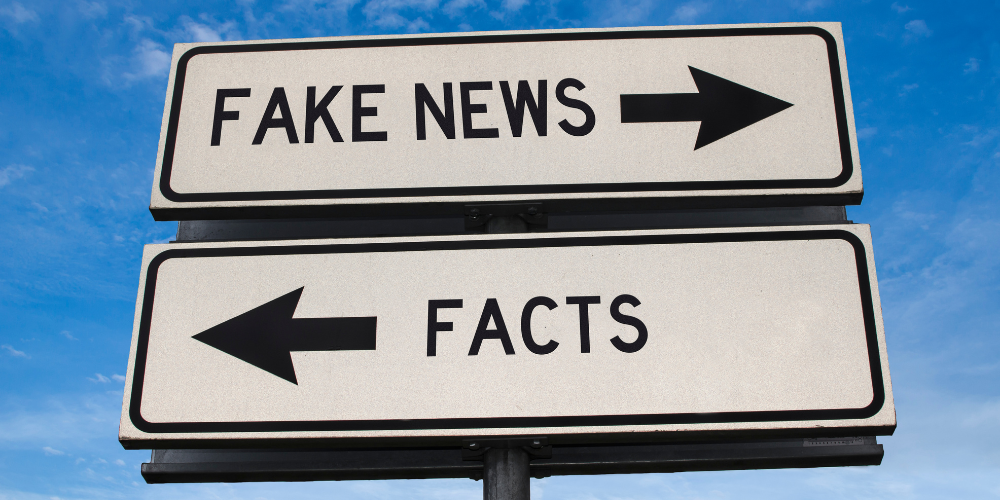In today’s digital age, where news travels at the speed of light, the rise of false information and fake news has become a pressing concern. This phenomenon erodes trust in traditional media and sows seeds of discord and confusion within societies. But what exactly is fake news, and why has it become so prevalent? More importantly, what can we do about it?
Defining Fake News and Misinformation
Before delving into the complexities of this issue, it’s crucial to establish a clear definition of fake news. While the term is often thrown around loosely, fake news refers to deliberately false or misleading information presented as news. It can take many shapes, from manipulated images and fabricated stories to misleading headlines and biased reporting.
False information, on the other hand, is misinformation that is spread, regardless of intent to deceive. While misinformation may not be intentionally harmful, it can still have serious consequences when it’s taken as fact.
Primary Factors Contributing to the Rise of Fake News
The rise of fake news is not a single-cause phenomenon but rather a result of a confluence of factors:
- The Internet and Social Media: The social media platforms and the Internet have democratized information sharing, enabling anyone with Internet access to publish and disseminate content. While this has empowered individuals and given voice to marginalized communities, it has also created an environment where false information can spread rapidly and widely.
- Clickbait and Sensationalism: The online advertising model, which relies heavily on clicks and engagement, incentivizes the creation of sensational and attention-grabbing content. It often leads to the spread of fake news, as sensational stories are more likely to be shared and go viral.
- Political Polarization and Confirmation Bias: In an increasingly polarized political landscape, people are more likely to believe information confirming their biases and distrust information that challenges their views. This confirmation bias creates fertile ground for spreading false news, as people are more likely to accept false information that aligns with their beliefs.
- Lack of Media Literacy: Many people lack the critical thinking and media literacy skills essential to evaluate the credibility of information online. It makes them more susceptible to falling for fake news and misinformation.
- Foreign Interference and Disinformation Campaigns: In recent years, there has been a rise in sophisticated disinformation campaigns orchestrated by foreign actors seeking to influence political discourse and sow discord within societies. These campaigns often involve creating and disseminating fake news via social media and other online platforms.
The Impact of Fake News on Individuals, Communities, and Societies
The spread of false news has far-reaching consequences that extend beyond mere misinformation:
- Erosion of Trust in Institutions: Fake news undermines trust in traditional media, government institutions, and experts. When people are constantly bombarded with conflicting information, it becomes difficult to discern what is true and what is not. This erosion of trust can have profound implications for democracy and social cohesion.
- Political Polarization and Social Division: Fake news often exacerbates existing political divisions by reinforcing pre-existing biases and creating echo chambers where people are only exposed to information that aligns with their views. It can lead to increased polarization, hatred, and even violence.
- Public Health Risks: During the COVID-19 pandemic, the spread of false news about the virus and vaccines has had devastating consequences. Misinformation about the disease has led to vaccine hesitancy, increased transmission rates, and preventable deaths.
- Economic Impact: Fake news can also have a significant economic impact. For example, false rumours about companies or financial markets can cause stock prices to plummet, leading to financial losses for investors.
The Role of Social Media Platforms, News Organizations, and Individuals in Combating Misinformation
Addressing the spread of fake news requires a multi-pronged approach involving social media platforms, news organizations, and individuals:
- Social Media Platforms: Social media companies are responsible for circulating false news on their platforms. It consists of implementing measures to identify and flag false content, limiting the reach of misinformation, and promoting credible sources of information.
- News Organizations: Traditional news outlets must uphold the highest journalistic integrity and fact-checking standards. They should also actively debunk false information and provide context for complex issues.
- Individuals: Individuals have a responsibility to be critical consumers of information. It involves verifying information from multiple sources, questioning the credibility of sensational claims, and avoiding sharing information without checking its veracity.
The Ethical Implications of Creating and Sharing Fake News
The creation and dissemination of fake news raise serious ethical concerns. It manipulates public opinion, undermines trust in institutions, and can lead to real-world harm. Those who create and share fake news, whether for financial gain, political advantage, or simply for amusement, bear a moral responsibility for the consequences of their actions.
Empowering Individuals Through Critical Thinking and Media Literacy
One of the most effective ways to combat fake news is to empower individuals with media literacy and critical thinking skills to evaluate information online. It involves teaching people how to:
- Identify credible sources of information: Look for sources with a reputation for accuracy and impartiality, such as established news organizations and academic institutions.
- Fact-check information: Verify information from multiple sources before accepting it as accurate. Use fact-checking websites and tools to assess the credibility of claims.
- Be aware of biases: Recognize and be wary of information confirming your views. Seek out various perspectives and challenge your assumptions.
- Think critically: Question the motives behind information and consider the potential consequences of sharing it. Don’t unquestioningly share information without verifying its accuracy.
Legal and Regulatory Measures to Address Fake News
While freedom of speech is a fundamental right, it’s not absolute. There are legitimate concerns about the harm caused by fake news, and some legal and regulatory measures may be necessary to address this issue. However, such measures must be carefully crafted to avoid infringing on free speech rights.
- Transparency in Online Advertising: Requiring greater transparency in online advertising, particularly in political ads, can help to decrease the spread of fake news by making it very hard for malicious actors to manipulate public opinion.
- Holding Social Media Platforms Accountable: Holding social media platforms responsible for the content that appears on their sites while ensuring they are not treated as publishers can incentivize them to take a more proactive role in combating misinformation.
- Strengthening Media Literacy Education: Investing in media literacy education can empower individuals to become more discerning consumers of information and less susceptible to falling for fake news.
Conclusion
The rise of false news and misinformation is a multifaceted, complex issue with no easy solutions. Addressing the root causes of this problem and mitigating its harmful effects requires a collective effort from individuals, social media platforms, news organizations, and governments.
By promoting media literacy, fostering critical thinking skills, and holding those who create and share fake news accountable, we can make a more resilient and informed society better equipped to navigate the challenges of the digital age.
Disclaimer
The above blog post is designed for general informational purposes only. It should not be deemed legal or professional advice. The opinions and views stated in the above post are merely those of the author and do not represent the opinions of any institution or organization.


